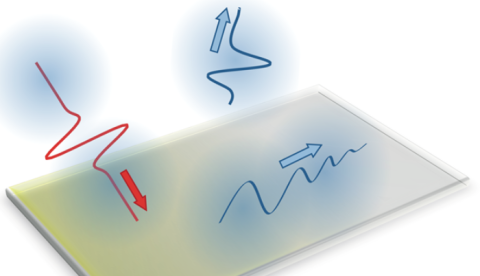Shaping the Future of Light Control: UNISANNIO Contributes to Breakthrough Research
An innovative study on light manipulation has been recently published in the prestigious Physical Review Letters. The research is the result of an international collaboration including Alessandra Contestabile and Carlo Rizza from the University of L’Aquila, Maria Antonietta Vincenti from the University of Brescia, Giuseppe Castaldi and Vincenzo Galdi from the University of Sannio, and Michael Scalora from the Combat Capabilities Development Command of the U.S. Army. The study leverages an advanced approach that utilizes the natural resonances of interfaces with time-varying dispersive properties to generate new frequencies and luminous surface waves.
The team has developed a unique "smart" surface capable of rapidly altering its properties to interact with light in groundbreaking ways. Comparable to a vibrating drumhead producing sound, this surface acts as an optical "switch," instantly modifying its characteristics to create new light frequencies and enabling rapid control over light behavior. Similar to a synchronized push that amplifies a swing’s motion, this timed variation can induce new light frequencies even in their absence from the original source.
"One particularly intriguing aspect of the research is the ability to produce trapped surface waves, which remain confined to the surface rather than propagating through space like conventional light waves," said Prof. Vincenzo Galdi from the University of Sannio. "This effect, achieved without traditional optical structures like prisms or gratings, opens up fresh possibilities for light control."
"At present, our findings are based on theoretical studies and numerical simulations, but we have identified several promising platforms for future experimental verification," added Prof. Carlo Rizza from the University of L’Aquila.
The potential applications of this technology are vast, spanning advanced sensing, telecommunications, and quantum computing. This study marks a significant step forward in understanding the fundamental interactions of light.
For further details: https://journals.aps.org/prl/abstract/10.1103/PhysRevLett.133.186902&nb…;

